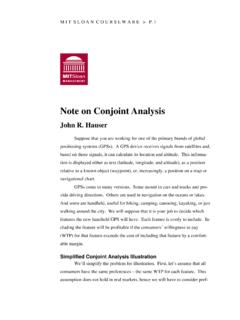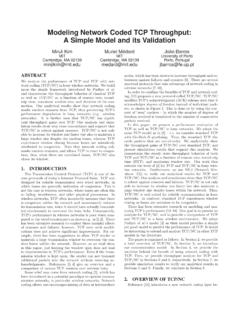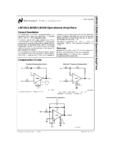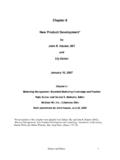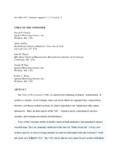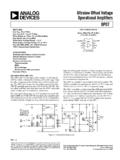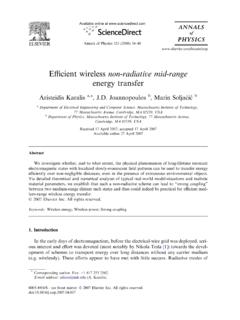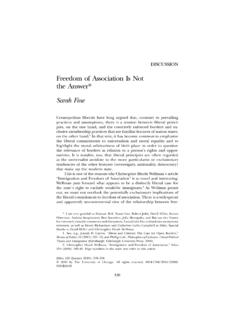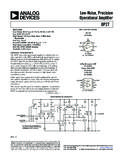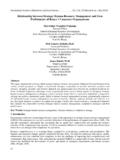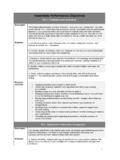Transcription of Fact & Fantasy: Risk Management in Electricity …
1 Fact & Fantasy: Risk Management in Electricity Markets John E. Parsons May 28, 2008. EEM '08, Lisbon Outline Seeing Risk Management Comprehensively Why Its Important: 2 Troublesome Facts Risk Management in Electricity : Trading Operations 2. Seeing Risk Management Comprehensively Traditional View of Risk Management Risk Management as a unitary activity defined by the particular types of instruments used. Therefore the place of risk Management is delimited. Trading operations investment bank commodity desk. Hedging policy for the company's operations a liability problem.
2 4. An Alternative, Comprehensive View of Risk Management Risk Management is practiced throughout the various functional departments of the corporation, in different ways, each appropriate to the objectives and tasks of the different department. Risk Management is simply the higher order analysis of the traditional finance preoccupation with risk. Old analysis was 2-dimensional: more or less risk. 9 Debt / Equity binary poles Old analysis was poorly calibrated. New tools empower a multi-dimensional analysis of risk.
3 9 Securities can be packaged in any form. 9 Various risk factors can be isolated or remixed. Tools have crossed over to the general Management of the non-financial corporation. 9 Analogous to the ubiquitous role of DCF analysis. 5. A Balance Sheet Framework Assets Liabilities Pricing Decisions Cash Management Supply Chain Mgmt. Tax Minimization Operating Decisions Debt Management Investments Strategic Hedging Performance Evaluation 6. How is Value Added on the Right Hand Side? Assets Liabilities Pricing Decisions Cash Management Supply Chain Mgmt.
4 Tax Minimization Operating Decisions Debt Management Investments Strategic Hedging Performance Evaluation 7. How is Value Added on the Right Hand Side? Negotiate the firm's relationship with the capital markets. Usually involves reducing risk. MM Theorem of Hedging: Price of risk is taken as given by the capital markets. No direct value from shifting risk. Source of value must be indirect alter the firm's engagements with the capital markets. Different levels of engagement: Short-term cash Management : the comptroller's responsibility.
5 Liability Management : the CFO's responsibility. Strategic hedging & investment: the CEO/CFO/Board responsibility. 8. How is Value Added on the Left Hand Side? Assets Liabilities Pricing Decisions Cash Management Supply Chain Mgmt. Tax Minimization Operating Decisions Debt Management Investments Strategic Hedging Performance Evaluation 9. How is Value Added on the Left Hand Side? No profit without risk! Risk Management has nothing to do with increasing or decreasing risk, per se. Risk Management is about valuation.
6 Pricing products with embedded risk to properly reflect their costs. Finding supply chain options with the lowest cost and highest value contribution, including risks. Optimizing the use of assets against risky external conditions. Measuring risk properly. Pricing risk properly. Identifying the most profitable line of operations. The details are handled in different ways depending on where the decisions are being taken. 10. Why It's Important: 2 Troublesome Facts Troublesome Fact #1: Hedge Ratios Are Too Small Yanbo Jin and Philippe Jorion, Journal of Finance, 2006, study of risk disclosures of 119 oil and gas producers in the US between 1998-2001.
7 Fewer than half of the companies with oil exposure hedge. Among hedging firms, the mean oil hedge ratio was 33% of next year's oil production and 4% of oil reserves: the median values were 24% and 2%. 12. Troublesome Fact #1: Hedge Ratios Are Too Small (cont.). Wayne Guay and Kothari, Journal of Financial Economics, 2003 studied hedging of interest rates, foreign exchange and commodity prices by a diverse collection of 234 non-financial corporations in many lines of business. They find that the hedge ratios employed are so small that [i]f interest rates, currency exchange rates, and commodity prices change simultaneously by three standard deviations, the median firm's derivatives portfolio, at most, generates $15 million in cash and $31 million in value.
8 The $15 million cash flow exposure amounts to less than 10% of the next three year's cash flow at the typical firm. The $31 million market value exposure amounts to approximately 2% of the book value of assets and 1% of the market value of assets. For three-quarters of the firms it is less than 4% of the book value of assets and less than 3% of the market value of equity. 13. Troublesome Fact #2: Hedges Are Too Weighted to Short-Maturities Haigh, Harris, Overdahl, Robe, Market Growth, Trader Participation and Derivative Pricing, Working Paper, 2007.
9 14. Amendment #1: Liquidity risk is central Exchange traded instruments involve mark-to-market settling up of even long-maturity hedges. Underlying exposures generate only unrealized value gains and these exposures are illiquid. The mismatch between cash flows on hedge instruments and underlying exposures means non-financial corporation that hedge face huge liquidity demands. The optimal hedge ratio based on traditional theory declines dramatically. Mello and Parsons, Review of Financial Studies, (2000): A value hedge is always far too large.
10 Even a short-term cash flow hedge may be too large. 15. Amendment #2: Actual hedges are a cash Management tool minimizing liquidity demand Cash Management is an overlooked, unfashionable topic in corporate finance theory. But it is the real heart of much day-to-day non-financial hedging. Objective is to reduce the uncertainty of near term cash inflows and outflows: economize on liquid cash balances; maximize the money return on short-term assets. Near term uncertainty is what matters for cash Management . Best to utilize short-maturity contracts.
